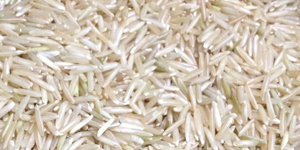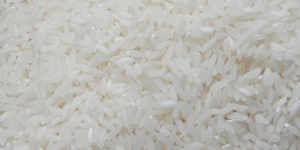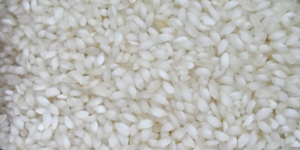|
BASMATI RICE IS A HERITAGE OF INDO GANGETIC PLANES..... All Aromatic rice are not Basmati but all Basmati rice are aromatic Basmati Rice is the most Treasured Grain grown only once in Indo Gangetic Plains of Himalaya and in some parts of Northern India where Soil and Weather Conditions are most favourable for its growth. Basmati rice is different from other aromatic rice varieties mainly due to the extra-long slender grains that elongate at least twice of their original size when cooked, Fluffier and produce a typical aroma and distinct Nutty flavour. Just like all species of rice, basmati is available in white or brown versions, depending on the extent of the milling process. Like jasmine rice, it has its own unique smell. In the case of basmati, this smell is due to the presence of a chemical called 2-acetyl-1-pyrroline, which is found in basmati rice at about 90 parts per billion. That's about 12 times more than in other types of rice, giving basmati its special aroma. Brown basmati rice is comparable to other types of brown rice in nutrient content (although it does contain about 20% more fiber compared to most other types of brown rice), and white basmati rice is comparable to other types of white rice." Basmati Rice is low in G.I. hence Basmati Rice is good for Diabetic people to eat especially Golden Parboiled as it has less of Starch. Basmati Rice is mostly processed to Brown, White or Parboiled (Sella) variety | BROWN BASMATI RICE | WHITE BASMATI RICE | PARBOILED (SELLA) BASMATI RICE | | Paddy is first Milled to remove Outer Husk and we get Brown Basmati Rice which has Brown Nutritious Layer due to Bran skin on the Rice | Brown Rice is then Polished to remove Brown color Bran Layer after which we get White Rice | Basmati Paddy is Soaked in Water for certain time period, then Dried and Milled. Due to soaking process, the Nutrients are absorbed Inside. Parboiled Rice is also called Sella Rice which is classified as CREAMY SELLA BASMATI RICE & GOLDEN SELLA BASMATI RICE | -Internationally, Rice varieties are classified as Long-, Medium-, Or Short-grain Rice based on their length-to-width ratio when cooked. Long-grain rice is long and thin (roughly four to five times as long as it is wide), while medium-grain rice is about two to three times as long as it is wide. Short-grain rice is considerably more wide than it is long. | Long Grain Rice | Medium Grain Rice | Short Grain Rice |  1. Skinny & Tall 2. Its length is at least four times what it is in width. 3. Average Grain Length above 6mm 4. Basmati Rice is common example. Some varieties of Non Basmati rice is also long grain rice like Parmal Rice |  1. Medium length 2. A rice grain that is about three times as long as it is wide. 3. Economical than long grain rice 4. Sona Masuri, Ponni, Matta Rice is best example |  1. Short & Fat. 2. Looks round in shape 3. Has higher level of starch so used to make pudding and Sushi. 4. Swarna, Kala Jeera, Round Rice is example of short grain Rice | |

